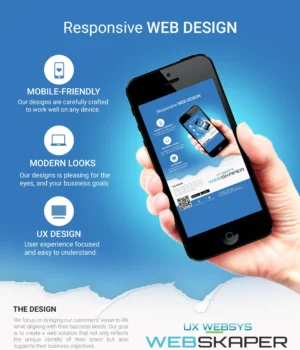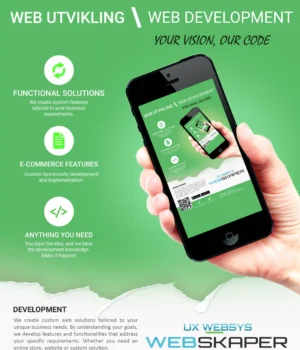What’s New In DevTools (Chrome 83)
Emulate vision deficiencies
Open the Rendering tab
and use the new Emulate vision deficiencies feature to get a better idea of how people with
different types of vision deficiencies experience your site.

DevTools can emulate blurred vision and the following
types of color vision deficiencies:
- Protanopia: the inability to perceive any red light.
- Deuteranopia: the inability to perceive any green light.
- Tritanopia: the inability to perceive any blue light.
- Achromatopsia: the inability to perceive any color except for shades of grey (extremely rare).
Less extreme versions of these color vision deficiencies exist, and in fact they are more common.
For example, protanomaly is a reduced sensitivity to red light (as opposed to protanopia,
which is the complete inability to perceive red light). However, these “-omaly” vision
deficiencies are not as clearly defined: every person with such a vision deficiency is different
and might see things differently (being able to perceive more/less of the relevant colors).
By designing for the more extreme simulations in DevTools, your web apps are guaranteed to be
accessible to people with protanomaly, deuteranomaly, tritanomaly, and achromatomaly as well.
Send feedback to Chromium issue #1003700.
Emulate locales
You can now emulate locales by setting a location in Sensors > Location. Open the
Command Menu and type Sensors to access the Sensors tab. After performing these actions
DevTools modifies the current default locale, affecting the following:
Intl.*APIs, e.g.new Intl.NumberFormat().resolvedOptions().locale- other locale-aware JavaScript APIs such as
String.prototype.localeCompareand
*.prototype.toLocaleString, e.g.123_456..toLocaleString() - DOM APIs such as
navigator.languageandnavigator.languages - the
Accept-LanguageHTTP request header
Note: updates to navigator.language and navigator.languages are not visible immediately, but only
after the next navigation or page reload. Changes to the Accept-Language HTTP header are only
reflected for subsequent requests.
Check out Locale-dependent code example to try it
yourself.
Send feedback to Chromium issue #1051822.
Cross-Origin Embedder Policy (COEP) debugging
The Network panel now provides Cross-Origin Embedder Policy debugging information.
The Status column now provides a quick explanation of why a request was blocked as well as a
link to view that request’s headers for further debugging:

The Response Headers section of the Headers tab provides more guidance on how to resolve
the issues:

Send feedback to Chromium issue #1051466.
New icons for breakpoints, conditional breakpoints, and logpoints
The Sources panel has new icons for breakpoints, conditional breakpoints, and logpoints:
- Breakpoints

are represented by red circles. - Conditional Breakpoints

are represented by half-red half-white circles. - Logpoints

are represented by red circles with Console icons.
The motivation for the new icons was to make the UI more consistent with other GUI debugging tools
(which usually color breakpoints red) and to make it easier to distinguish between the 3 features
at a glance.
Send feedback to Chromium issue #1041830.
View network requests that set a specific cookie path
Use the new cookie-path filter keyword in the Network panel to focus on
the network requests that set a specific cookie path.
Check out Filter requests by properties to discover more special keywords
like cookie-path.
Dock to left from the Command Menu
Open the Command Menu and run the Dock to left
command to move DevTools to the left of your viewport.

Note: DevTools has had the Dock to left feature for a long time but it was previously only
accessible from the Main Menu.
The new feature in Chrome 83 is that you can now access this feature from the Command Menu.
Send feedback to Chromium issue #1011679.
The Settings option in the Main Menu has moved
The option for opening Settings from the Main Menu can now be found under
More Tools.

Send feedback to Chromium issue #1050855.
The Audits panel is now the Lighthouse panel
The DevTools and Lighthouse teams frequently got feedback from web developers that they
would hear that it’s possible to run Lighthouse from DevTools, but when
they went to try it out they couldn’t find the «Lighthouse» panel, so the Audits panel is now the
Lighthouse panel.

Delete all Local Overrides in a folder
After setting up Local Overrides you can now
right-click a folder and select the new Delete all overrides option to delete all
Local Overrides in that folder.

Send feedback to Chromium issue #1016501.
Updated Long tasks UI
A Long Task is JavaScript code that
monopolizes the main thread for a long time, causing a web page to freeze.
You’ve been able to visualize Long Tasks in the Performance panel
for a while now, but in Chrome 83 the Long Task visualization UI in the Performance panel has been updated.
The Long Task portion of a task is now colored with a striped red background.

Send feedback to Chromium issue #1054447.
Maskable icon support in the Manifest pane
Android Oreo introduced adaptive icons, which display app icons in a variety
of shapes across different device models. Maskable icons
are a new icon format that support adaptive icons, which enable you to ensure that
your PWA icon looks good on devices that support the
maskable icons standard.
Enable the new Show only the minimum safe area for maskable icons checkbox in the
Manifest pane to check that your maskable icon will look good on Android Oreo
devices. Check out Are my current icons ready?
to learn more.
![]()
Note: This feature launched in Chrome 81. We’re covering it here in Chrome 83 because we forgot to cover it
in What’s New In DevTools (Chrome 81).
<<../../_shared/devtools-feedback.md>>
<<../../_shared/canary.md>>
<<../../_shared/discover.md>>
This post is also available in:
 English
English





